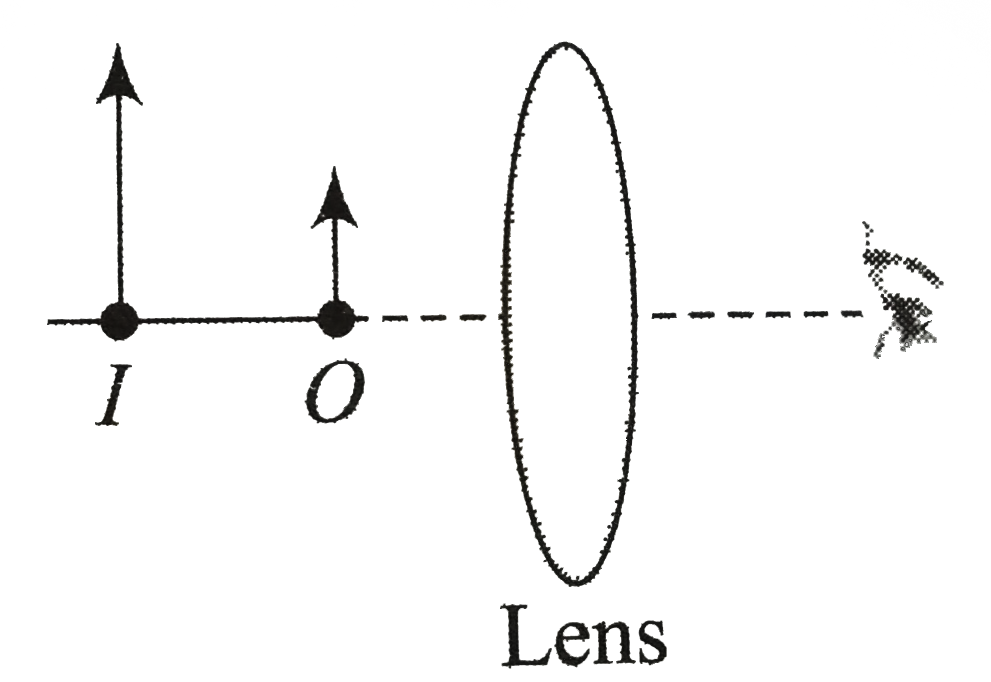A man with normal near point (25 cm) reads a book with small print using a magnifying glass : a thin convex lens of focal length .
What are the closest and the farthest distances at which he can read the book when viewing through the magnifying glass ?
To solve the problem step by step, we will calculate the closest and farthest distances at which a man can read a book using a magnifying glass (a thin convex lens) with a focal length of 5 cm.
Step 1: Understand the Given Information
- Normal near point (D): 25 cm (the closest distance at which the man can see clearly without any optical aid)
- Focal length of the lens (f): 5 cm
Step 2: Calculate the Closest Distance
To find the closest distance (u) at which the man can read the book through the magnifying glass, we will use the lens formula:
1f=1v−1u
Where:
- f = focal length of the lens = 5 cm
- v = image distance (for the near point, this is -25 cm since the image is virtual and on the same side as the object)
- u = object distance (the distance of the book from the lens)
Substituting the known values into the lens formula:
15=1−25−1u
Step 3: Rearranging the Equation
Rearranging the equation to solve for u:
1u=1−25−15
Step 4: Finding a Common Denominator
Finding a common denominator to combine the fractions:
1u=−125−525=−625
Step 5: Inverting to Find u
Now, we can find u:
u=−256≈−4.17 cm
This means the closest distance at which he can read the book is approximately 4.17 cm.
Step 6: Calculate the Farthest Distance
For the farthest distance, we assume the image is formed at infinity (v = ∞). Using the lens formula again:
1f=1v−1u
Substituting v=∞:
15=0−1u
Step 7: Solve for u
Rearranging gives:
1u=−15
Thus:
u=−5 cm
This means the farthest distance at which he can read the book is 5 cm.
Summary of Results
- Closest distance: Approximately 4.17 cm
- Farthest distance: 5 cm
- Normal near point (D): 25 cm (the closest distance at which the man can see clearly without any optical aid)
- Focal length of the lens (f): 5 cm
To find the closest distance (u) at which the man can read the book through the magnifying glass, we will use the lens formula:
- f = focal length of the lens = 5 cm
- v = image distance (for the near point, this is -25 cm since the image is virtual and on the same side as the object)
- u = object distance (the distance of the book from the lens)
Rearranging the equation to solve for u:
Finding a common denominator to combine the fractions:
Now, we can find u:
For the farthest distance, we assume the image is formed at infinity (v = ∞). Using the lens formula again:
Rearranging gives:
- Closest distance: Approximately 4.17 cm
- Farthest distance: 5 cm
Topper's Solved these Questions
- BOOK - ALLENCHAPTER - GEOMETRICAL OPTICSEXERCISE - SOME WORKED OUT EXAMPLES83videos
GEOMETRICAL OPTICS
- BOOK - ALLENCHAPTER - GEOMETRICAL OPTICSEXERCISE - EXERCISE -0165videos
GEOMETRICAL OPTICS
- BOOK - ALLENCHAPTER - CURRENT ELECTRICITYEXERCISE - EX.II66videos
CURRENT ELECTRICITY
- BOOK - ALLENCHAPTER - GRAVITATIONEXERCISE - EXERCISE 49videos
GRAVITATION
Similar Questions
A child has near point at 10 cm. What is the maximum angular magnification the child can have with a convex lens of focal length 10 cm?
View SolutionThe maximum magnification that can be obtained with a convex lens of focal length 2.5 cm is (the least distance of distinct vision is 25 cm )
View Solution
Knowledge Check
- Question 1 - Select One
A person with a normal near point (25cm) using a compound microscope with an objective of focal length 8.0mm and eye piece of focal length 2.5cm can bring an object placed 9.0cm from the objective in sharp focus. What is the separation between the two lenses ? Calculate the magnifying power of the microscope ?
A9.47cm,88B3.36cm,44C6.00cm,22D4.79cm,11
A simple microscope or a magnifying glass with a focal length 5 cm forms an image at the near point of the eye. Find its magnification .
View SolutionA convex lens of focal length 30 cm produces 5 times magnified real image of an object. What is the object distance?
View SolutionA thin convex lens of focal length 5 cm is used as a simple microscope by a person with normal near point (25cm) . What is the magnifying power of the microscope.?
View SolutionA magnifying glass of focal length 5cm is used to view an object by a person whose smallest distance of distinct vision is 25cm. If he holds the glass close to eye, then the magnification is
View SolutionA cardsheet divided into squares each of size 1mm2 is being viewed at a distance of 9cm through a magnifying glass (a conerging lens of focal length 10cm) held close to the eye.
(a) What is the magnification produced by the lenas ? How much is the area of each square to the virtual image ?
(b) What is the angular magnification (magnifying power) of the lens ?
( c) Is the magnification in (a) equal to the magnifying power in (b) ? ExplainView SolutionA person with a normal near point (25cm) using a compound microscope with an objective of focal length 8.0mm and eye piece of focal length 2.5cm can bring an object placed 9.0cm from the objective in sharp focus. What is the separation between the two lenses ? Calculate the magnifying power of the microscope ?
View SolutionA man wishes to view an object through a convex lens of focal length 10cm. The final image is to be eret and magnified 2 times. How far from the object must he hold the lens?
 View Solution
View Solution

